Unique's Approach To Mold Making
This Canadian mold making shop, Unique Mould Makers, is aptly named. Virtually every multi-cavity injection mold set made for the manufacture of caps, closures, vials and other packaging applications is indeed unique. One might think that automation and standardization would not be of interest to such a shop. Think again!
Mold making shops, in many ways, are representative of the breadth of metalworking skills and operations. In most cases, they have one chance to get the job right and must work their magic under increasingly tough time constraints.
A typical mold shop deals with milling, drilling, jig boring, turning, grinding, EDM and heat treating to name a few of the operations required to manufacture cores and cavities. Each job that comes through the shop is different, requiring constant analysis of the shop’s capabilities with little or no benchmark from which to evaluate.
Typically, a shop looks at these operations as individual steps along the mold production line. Work flows through the shop from operation to operation in pretty much linear fashion. Some jobs need all of the shop’s capability while another may only require a fraction of what’s available.
In this manufacturing model, automation, to any significant degree, is generally considered too restrictive to the work flow flexibility. The shop needs to keep itself operationally agile.
At Unique Mould Makers Limited (Toronto, Canada), we found a shop that has re-evaluated the “automation is for higher production volumes” mystique to great success. Here’s a look what it has done to streamline production of mold sets for making caps and closures for the packaging industry using multi-tasking machine tools with automated material handling. It’s a Unique story.
What Is Made
Many manufactured items appear to be so simple that the technology behind them is often obscured. For example, plastic caps, screw-lids for jars, child-proof caps for medicines and almost any other plastic closure get little acknowledgement from users—unless they don’t work. Unique Mould Makers has built a good business manufacturing the technically complex molds that allow consumers to take little or no notice of the end product that keeps the contents of a container in the container.
The molds that Unique manufactures are multi-cavity with as many as 96 cores and cavities in a single set. The number of cores and cavities varies from job to job, so manufactured lot sizes are also variable.
Each core and cavity can have five or six different parts that make it work. Cycle times on the injection molding machines that crank out these plastic tops are around eight seconds.
Like most mold makers, Unique manufactures a gamut of products—from relatively simple bump-off molds, where the cap is ejected as the mold separates, to complex unscrewing and collapsing molds that mechanically or hydraulically clear the core from interfering with the cap’s threads.
The critical cores and cavities that come together to mold the caps and closures are attached to a set of mold bases. Essentially, the shop has parallel production lines with mold bases being manufactured as the cores and cavities are produced.
With generally one mold base per job, this component rarely held up the manufacturing process. On the other hand, the cores and cavities, because of their variable quantities from mold to mold, and because of their complexity, represented a significant area of throughput improvement potential for Unique.
It’s A Jungle Out There
There is one overriding truth in the market served by Unique Mould Makers. Time to market is the prime directive for participation in these big leagues as defined by customers such as Procter and Gamble, Lever Brothers, Kraft and many others.
“Unique’s customers are companies that don’t like to wait,” says Tony Grossi, president of Unique. “Once these large companies make a decision on a new closure for one of their packages, they want to start cranking them out soon as possible. If we can’t get good molds to them in a timely way, someone else will. It’s that simple.”
A couple of years ago, Unique took a hard look at its manufacturing operation. Like most shops, work on individual mold components progressed from one stand-alone machine to the next.
In the case of the complex cores and cavities, milling and turning operations represented a bottleneck. It was a classic balancing problem between a relatively fast turning cycle and slower milling and drilling. Setup for the two machines was also a factor. Work in process between the lathe and machining center was costing precious lead-time.
“When a job is sent to the manufacturing floor,” says Will Haire, team leader of the CNC department, “we have a block of hours assigned to the milling and turning department. If the department fell behind, we had to subcontract or work overtime hours to keep on our production schedule. We were subcontracting around 30 percent of our milling and turning work. That was too much.”
Getting Out The WIP
Because the cores and cavities on Unique’s molds are round, turning plays a big part in their manufacture. Moreover, to accommodate cooling lines, each core and cavity requires drilling a number of accurate holes. Some of these holes are at angles, so a minimum of four axes is needed to make them.
“When we began analyzing our milling and turning process,” says Mr. Grossi, “we arrived at basically three ways to overcome the milling and turning bottleneck. The first and most obvious was to simply buy more turning and milling capacity. A second idea was to use turning centers with live tooling. And the third option was to go mutli-processing as represented by the Mazak Integrex series. We chose the third.”
Basically, Mr. Grossi and his manufacturing people figured that buying more mills and lathes would just scale up the work-in-process bottleneck they already had. Turn/mill was getting closer to what they wanted but lacked the tooling capacity on the turret to allow untended shifts. In May of last year the shop took delivery of its first Integrex machine. It has a tooling capacity of 40, with a combination of turning or milling cutters.
What multi-processing has done for the shop is reduced work-in-process to near nothing for the turning and milling department. The machine tool is a machining center with turning capability.
Blanks go in and finished parts come out. One handling is required. The work flows through the machine smoothly with little or no operator interference.
Dimensional accuracy is better with a single handling. Most of the cores and cavities are machined in a green state and go to heat treat from the mill/turn machine. Grinding is done on the hardened parts. “The consistency we get with these new machines allows us to reduce the amount of grind stock left on the part,” says Mr. Grossi.
Multi-process machines, such as Unique’s, are a relatively rare sight in mold making shops. Rarer still are the next two machines that were installed in October of last year. Each is a dual spindle Integrex equipped with gantry loader.
“When we installed the second and third multi-processing machines,” recalls Mr. Grossi, “more than one of our employees figured management had lost its mind. Why would you put gantry loaders on machines with a typical lot size of 24 to 36 pieces?”
Some of the savings Unique has realized, besides work in process reductions, include reduction of setup time. Instead of getting a lathe and machining center set to run a job, only the multi-processing machine needs to be made ready. That entails getting the right grippers on the loader, the right jaws on the main spindle and sub-spindle, loading the right mix of cutters in the tool chain and selecting the program.
Unique has only had its machines for a few months, so programming is by far the largest segment of setup. Usually it’s about a three-hour process with most of that time occupied by inputting the program, which is done on the shop floor.
Background programming helps with efficiency by allowing the operator to program one job while another is running. Mr. Haire believes that as the shop gets experience with the CNC and as it acquires a database of programs, programming time will come down significantly.
Standardize For Flexibility
In general, with a step-by-step linear process flow, many shops see reduction of the machining time as a key to improving throughput and productivity. As a result, these shops look at ways to minimize the amount of metal removed, thereby reducing the time required.
It hasn’t taken long for Unique to realize that multi-processing is more than a machining station. It’s really about looking at the total machining picture up stream and downstream from the machine tools.
Most of the cores and cavities used in Unique’s mold sets are cut-off blanks. The materials are H-13 and 420 stainless, D2 steel and beryllium copper. Currently the shop stocks six different bar sizes. These range from 1.5-inch through 7-inch.
“We’d like reduce the number of bar sizes we stock to three instead of the six we have now,” says Mr. Grossi. “Advantages to this include simplified setup on the machines by using fewer gripper sets for the loader and jaws for the chuck. It would save us money on purchased materials because we can make larger quantity buys. It also simplifies inventory of raw stock.
“Moreover,” he continues, “while we may be removing more stock on some jobs, the savings in overall throughput more than offsets an additional couple of minutes machining time. We’re learning to look at our machining process as a sum of its parts rather than an accumulation of independent time units.”
In scheduling work this has an effect as well. “Now when we are setup to run,” says Mr. Haire, “we are looking at the next job and trying to adjust scheduling so we achieve a family of parts flow across the machines. Running parts back to back that are geometrically similar takes less time to change over, which helps keep spindle utilization up. It makes us look at our job planning differently.”
An effort to standardize tooling is another area where significant savings are being realized. With 40 tool pockets available, Unique’s engineering department is looking at ways to work within a standard tooling package. “We’re asking our engineers to evaluate corner radii and coolant holes as examples where standard dimensions won’t affect mold performance but can have positive effect on manufacturability,” says Mr. Grossi.
Results
In effect, adding multi-processing capability has created additional shop capacity. The lathes and mills originally used for all of Unique’s production are now available to do additional work.
“Basically,” says Mr. Grossi “the work we had to send out to keep on schedule can now be run, when necessary, across the dedicated lathes and mills. That’s resulted in about 20 to 30 percent of our turning and milling work coming back under our direct control. Plus, we can still subcontract if we need to.”
Before Unique began upgrading its milling and turning operations, typical delivery for a mold set was 20 to 24 weeks. “The first job we completed using our multi-processing machine was three weeks ahead of our quoted delivery,” says Mr. Grossi. “The next job was three weeks early. We’re looking at reducing our quoted deliveries down to 16 or 18 weeks. With time to market such a prime driver, this is very good news for our business.”
In addition, manufacturing costs are coming in lower because the sub-contracting work has been virtually eliminated. Down the road, Unique is looking at the ability to do more standard mold work in addition to the custom work that is 90 percent of its business. “Lower manufacturing costs make us more competitive and open up additional potential markets,” says Mr. Grossi.
Making Plans
A year ago the milling and turning operations were a constraint to production. Using the multi-processing machines has effectively resulted in a 30 to 50 percent improvement in throughput for these operations.
Now, the constraint is the grinding operation. Unique is addressing this with new machines as well. “With the throughput improvement we’ve seen in milling and turning,” says Mr. Grossi “now we’re chasing the processing bottlenecks around the shop. After the grinding operation gets updated we’ll look downstream to the EDM operation. Perhaps a laser can do the work faster that we’re EDMing now. The object is to reduce time to market for our molds.”
Another improvement that Mr. Grossi anticipates will happen in the near future is the use of hard turning and milling techniques on the multi-processing machines. “We machine the core and cavity component in a green state then send them out for heat treat. When they come back from heat treat, the parts are ground. Machining in a hardened state could eliminate the in-process turn-around time of heat treat and reduce our overall throughput.”
This shop has embraced the automation represented by multi-processing and made it work well in its business. It’s how Unique is competing in its very tough market. The realization that how you manufacture is as important as what you manufacture is leading this shop to the head of its class.
Related Content
Choosing a Five-Axis Machine Tool With Automation in Mind
While much focus is placed on the machinery that moves parts, the features most important for automating five-axis machining are arguably found in the machine tool itself.
Read MoreVolumetric Accuracy Is Key to Machining James Webb Telescope
To meet the extreme tolerance of the telescope’s beryllium mirrors, the manufacturer had to rely on stable horizontal machining centers with a high degree of consistency volumetric accuracy.
Read MoreGrinding Wheel Safety: Respect The Maximum Speed
One potential source of serious injury in grinding comes from an oversight that is easy to make: operating the wheel in an over-speed condition.
Read MoreThreading On A Lathe
The right choices in tooling and technique can optimize the thread turning process.
Read MoreRead Next
The Cut Scene: The Finer Details of Large-Format Machining
Small details and features can have an outsized impact on large parts, such as Barbco’s collapsible utility drill head.
Read More3 Mistakes That Cause CNC Programs to Fail
Despite enhancements to manufacturing technology, there are still issues today that can cause programs to fail. These failures can cause lost time, scrapped parts, damaged machines and even injured operators.
Read More






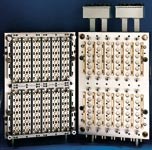
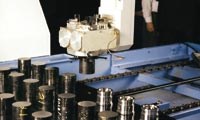
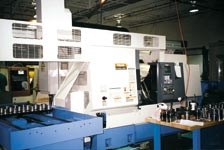
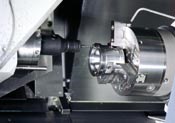

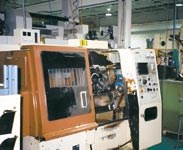


















.png;maxWidth=300;quality=90)








